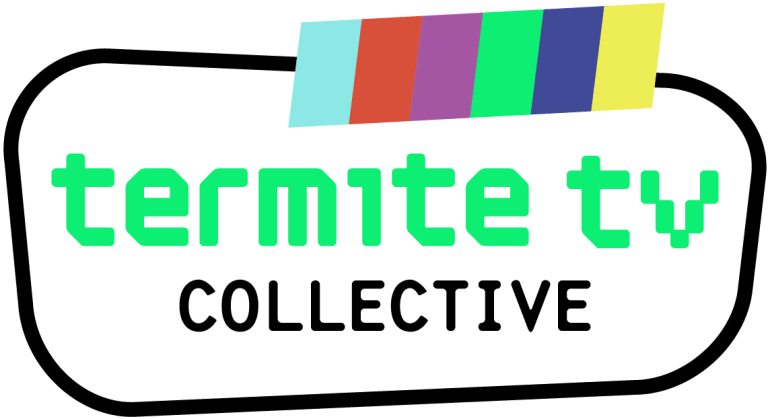In 1992 three Temple University graduate students, Jim Ospenson, Merle Perlson and Michael Kuetemeyer, were so blown away by Manny Farber’s 1962 manifesto, “Termite Art Vs. White Elephant Art,” that they formed the Termite TV Collective. Kuetemeyer explains, “What was inspirational for us was Manny Farber’s definition of ‘termite art’ being art that doesn’t strive for perfection, where the emphasis is on exploration, on taking risks, rather than relying on a formulaic style of producing work that has been successful in the past. This freedom to experiment creates a sense of playfulness and spontaneity in the work that we produce.”
Funded in part by the Pennsylvania Council on the Arts and individual donors, the collective has created a massive body of work over the years, with thousands of videos in its archive. These days, Termite TV is actively engaged in multiple projects. As technology has changed since the early 1990s, Termite has changed its methods of collecting, editing and displaying work.
Termite’s Walk Philly project involves the use of iPods as mobile video viewing devices. As of this writing, there are 25 videotaped walking tours, and the database continues to grow. “Each Walk Philly video tour is a personal interpretation evoking different moods, memories and histories ranging from the playful to the experimental to the informative,” according to Walk Philly brochure. One tour follows an urban forager while others feature historic sites. According to Termite Mike O’Reilly, the collective’s experimental techniques generate a lot of useless stuff, but also some unexpected gems within, creating moments of profound depth.
Termite’s Laura Deutch is in charge of Termite’s Messages in Motion project, which “works with neighborhood programs and community-based organizations to produce, distribute and exhibit short-form documentary videos as a way to support and enhance existing community organizing work.” A van containing handheld Flip video digital recorders, laptops, internet access and a viewing monitor travels throughout the city, offering writing and video training, multiple distribution platforms and groundbreaking teaching models.
Deutch parks the van at a branch library and conducts a one-hour workshop for five to ten young people, who learn how to gather images and do voiceovers. She wants to help kids understand how to use media to create a message that can be personal or political. The results are striking. In neighborhoods that normally only see a video crew covering a murder or fire, young people create poignant video postcards that portray everyday lives, sometimes using poetry as narrative.
Messages in Motion recently received a grant for its upcoming Securing Spaces tour, with a mission to “rethink what it means to be secure by looking at how communities address the interconnected issues of physical well-being, water safety and food safety to create safe spaces in their neighborhoods.” Another upcoming project is Water Food Shelter, also known as The Basics Trilogy. Three 29-minute episodes, addressing basic human needs in poetic and political terms, are set to broadcast in mid-May on PhillyCAM.
Mike O’Reilly wishes he could be more flexible at WHYY, but decisions about programming come from the top down at the venerated public TV station, and new initiatives take a lot of time, much like changing course on a giant ship. Termite TV, by contrast, is able to make decisions from the bottom up, by collective action, and the resulting work is spontaneous, playful and experimental, blending personal and political, able to be limber, light and distributed.
